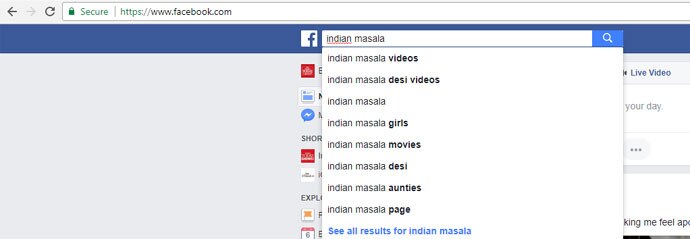Google Images shows images of women when you type 'South Indian masala'

A simple search for Google Images has revealed the hidden misogyny among the increasingly net-savvy Indian men. This is how it happened. Just when someone, presumably looking for spices and condiments, typed south Indian masala, the results that Google Images threw up were of images of women. The same search for "north Indian masala", however, shows pictures of real spices and condiments.
Shocked, the user posted the results on Facebook, only to meet with more misogynistic "ha ha ha" and "South Indian Masala still has a lot of scope for improvement!".
The user believes Google should have an answer to this.
But what’s Google to do?
For the uninitiated (although it's hard to believe anyone doesn't know) Google Images is a search service that was introduced a decade and a half ago to help users find image content on the Web.
However, the keywords for the image search are actually based on the filename of the image (so you can imagine the file names of those pictures of women — yes, masala). When searching for an image, a thumbnail of each matching image is displayed.
While Google's main aim is to organise and store the entire world's information, it inadvertently serves as a mirror to our cultural stereotypes and the prevailing ideals.
It's no secret how women in an intensely patriarchal India are often referred to as masala (spices), maal (object) and item.
And Bollywood cinema, which has been a major point of reference for the Indian culture, upholds the traditional patriarchal views of this society which strongly feels women are "objects" and not "subjects".
In fact, Indian cinema has a whole genre known as masala (commercial) films, which mostly mean women featured in them dancing suggestively to item songs. Actors and dancers appearing in those songs are categorised as "item girls" while there are no "item men".
The cinema industries down south are equally, if not more, guilty of perpetuating sexism and patriarchy with sexualised violence and objectification of women in their movies.
Even a UN-sponsored study agrees that Indian films are high in sexualisation and stereotyping of women.
According to this report, the study, commissioned by the Geena Davis Institute on Gender in Media, with support from UN Women and The Rockefeller Foundation, "reveals deep-seated discrimination, pervasive stereotyping, sexualisation of women and their underrepresentation in powerful roles by the international film industry". And Indian films, according to the study, have a significantly higher prevalence of sexualisation of female characters "measured in terms of sexually revealing clothing, nudity and attractiveness".
The fact of the matter is that Indian cinema does nothing but exploits the Indian male mindset that has a lot of curiosity and sexist notions about women’s bodies.
And Google Images reflects the same mindset, wherein the empowered Indian men search for south Indian masala (read women in scanty clothes) with tags like hot, bath, desi, armpit, navel, and names of popular female actors.
The tags further reveal what the Indian men look for in the south Indian female actors.
We did some more searches. This time on Facebook and were not surprised by the suggestions:
A search for Indian girls:

South Indian masala:

Indian masala:

However, this is true for most searches on the internet. The moment words are being typed in, the suggestions that come up reflect the mindset that rules the modern Indian netizens.
Even the Google Images results for the word item (which means an individual article or unit, especially one that is part of a list, collection, or set) shows among a list of assorted items, images from dance scenes in Indian movies.

And lastly, Indian item:

That these incidental discoveries are more than accidental sexism is something that the Indians must wake up to, to understand rape culture, to understand sexual coercion and exploitation, to understand the normalisation of disregarding consent (a no means no).

